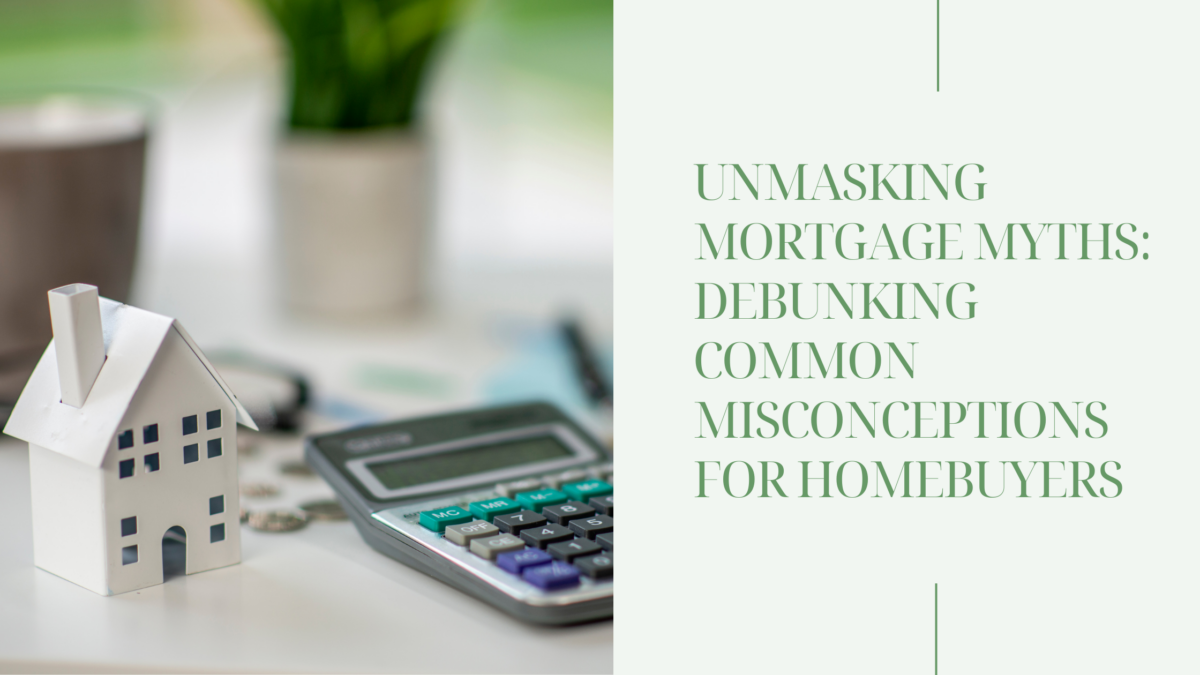Applying for a mortgage can seem like a labyrinth of uncertainty, especially for first-time homebuyers navigating unfamiliar terrain. The realm of mortgage information often brims with confusing and conflicting notions, leaving potential borrowers hesitant to embark on this journey.
To provide much-needed clarity, we’re here to dispel six prevalent mortgage loan myths, unraveling the truths beneath the misconceptions.
1. The 20% Down Payment Dilemma Debunked
A pervasive myth suggests that every loan type mandates a hefty 20% down payment. This misleading belief deters many from even considering homeownership due to perceived financial limitations. The reality is different—borrowers lacking a 20% down payment can still secure a loan by opting for Private Mortgage Insurance (PMI). Though PMI entails an additional monthly expense, it safeguards lenders in case of borrower default. Certain Conventional or FHA loans allow down payments as low as 3-5%, presenting viable alternatives. Once you amass 20% home equity, you can bid adieu to PMI and continue making mortgage payments sans the extra burden.
2. Distinguishing Pre-Qualification from Pre-Approval
Clarity is imperative when understanding the distinction between pre-qualification and pre-approval. Pre-qualification provides an approximate borrowing estimate based on current finances and credit score, aiding in identifying suitable loan options. On the other hand, pre-approval delves deeper, encompassing a comprehensive financial evaluation, including credit checks. It culminates in a written commitment from the lender, specifying the maximum loan amount they can extend.
3. Demystifying Down Payments and Closing Costs
The notion that your down payment also covers closing costs is a common fallacy. While the down payment is a significant upfront expense, it exclusively caters to the home’s principal value. Closing costs, encompassing fees like appraisals and title insurance, remain a distinct financial aspect. Typically ranging between 3% to 6% of the loan balance, closing costs warrant separate consideration.
4. Imperfect Credit and Homeownership
Contrary to the myth of requiring flawless credit, aspiring homeowners with less-than-perfect credit have options. FHA loans, backed by the government, provide a viable avenue for those who don’t meet conventional loan requirements. Furthermore, proactive credit-building steps can pave the way for eligibility and improved loan terms.
5. The Temporal Impact of Mortgage Applications on Credit
Concerns about mortgage applications negatively affecting credit are valid, albeit temporary. Similar to applying for other lines of credit, a mortgage application may lead to a short-lived dip in your credit score. However, this effect typically surfaces after the pre-approval stage. For credit-conscious individuals, refraining from opening unnecessary lines of credit during this period is advisable.
6. Debt and Homeownership: Debunking Misconceptions
The belief that homeownership hinges on a debt-free existence is a misconception. Many Americans shoulder various forms of debt, be it student loans or car payments, without precluding homeownership. What matters is your debt-to-income ratio, revealing the proportion of your income allotted to debt payments. A lower ratio signifies a less risky borrower. Addressing debt through repayment strategies or increased income generation can enhance your eligibility and broaden homeownership prospects.
In conclusion, navigating the realm of mortgages demands a clear understanding untainted by myths. Armed with accurate information, potential homebuyers can make informed decisions, secure suitable loans, and realize their homeownership dreams.
Have questions about mortgage myths or seeking expert guidance? Contact us today for accurate insights tailored to your needs.
